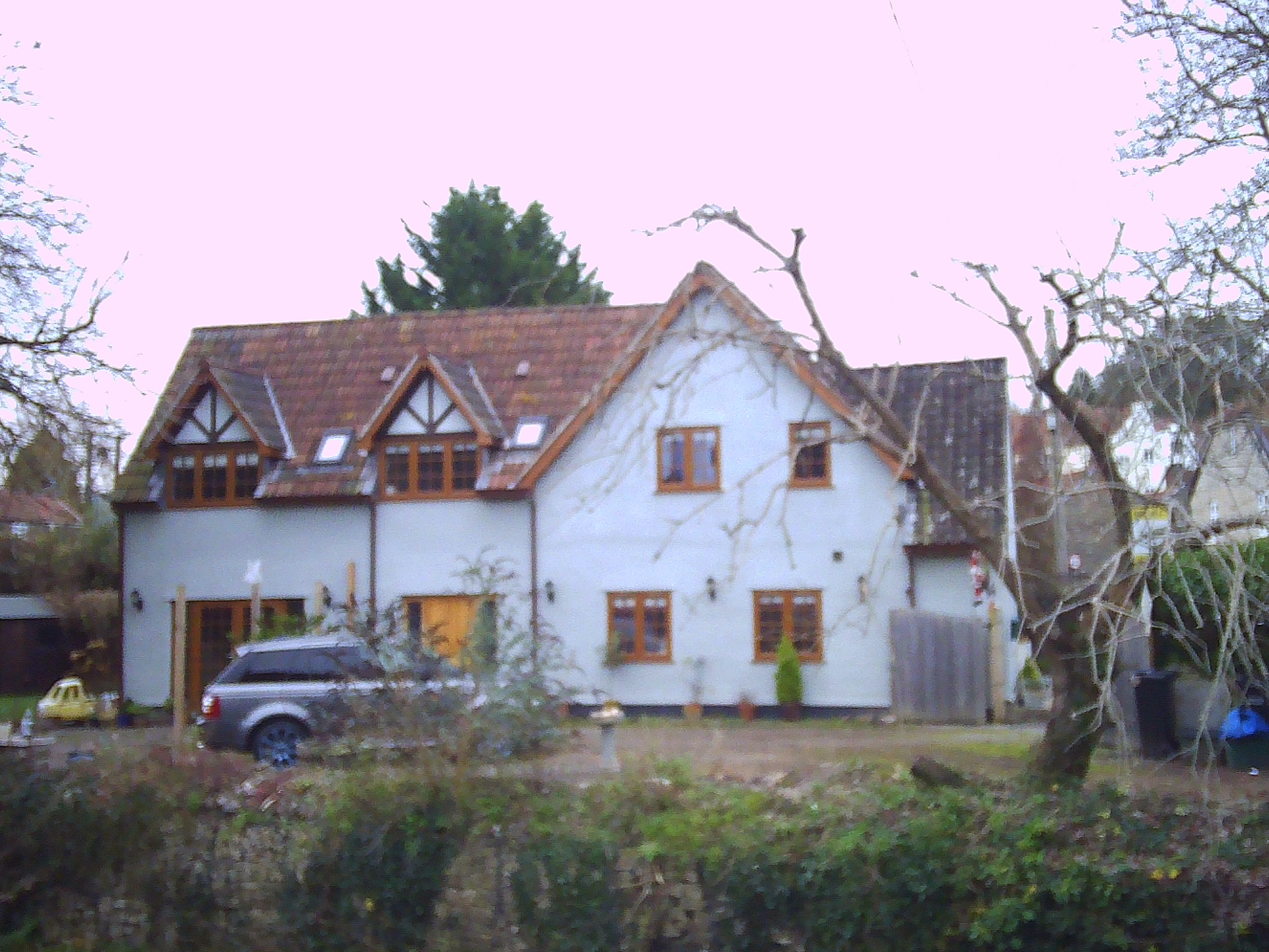Digital Camera World Verdict
The Mutrain Digital Camera X10 promises a mighty 48 megapixels for photos and Full HD video capture, but costs next to nothing to buy. As far as I’m concerned, that’s pretty much what it’s worth.
Pros
- +
Amazingly inexpensive
- +
Full-width selfie mirror
- +
48 megapixels!!!
Cons
- -
Dire image quality
- -
Plasticky build and feel
- -
No optical zoom
Why you can trust Digital Camera World
Harking from Guangdong in China, Mutrain is a company that makes digital cameras which, in their words, ‘capture professional-grade photos anytime, anywhere’. And what professional photographer wouldn’t want a 48-megapixel camera complete with a lens, that’s small enough to slip into a jacket pocket? I’d be first in line, especially as the purchase price is so low that it beggars belief. I duly bought one from Amazon and a day later, my joy was complete.
But the joy only lasted for as long as it took me to start using the camera. It very quickly became clear that it’s not one of the best cheap cameras on the market, the best cameras for beginners, or the best cameras for kids.

Mutrain Digital Camera X10: Specifications
| Photo Resolution | 48MP |
| Video Resolution | FHD 1080p |
| Image Sensor | CMOS |
| Selfie mirror | Yes |
| Display | 2.88-inch fixed LCD |
| Touchscreen | No |
| Battery | Li-ion (internal, fixed) |
| Connections | USB-C |
| Size (WxHxD) | 100 x 60 x 20mm |
| Weight | 98g (inc battery & card) |
Mutrain Digital Camera X10: Price
Let’s stick with Mutrain’s claim that this camera can capture professional-grade photos, at least for a moment. I’ve certainly enjoyed using and owning cameras akin to the Canon EOS R5 Mark II ($5399 / £5749) and Nikon Z 8 ($5099 / £4839) which, like the Mutrain, boast 40+ megapixels of resolution for still images. The Mutrain undercuts these cameras for price, by more than 99 percent, selling for around $30 / £25. How do they do that? Let’s just say there’s quite a lot of jiggery-pokery involved.
Mutrain Digital Camera X10: Design & Handling
My first impressions are actually pretty good. The camera is well presented in a stylish and nicely made box, which also plays host to a 32GB microSD card, a USB charging cable, a wrist strap, a drawstring pouch, and even a stick-on screen protector. The camera has a built-in rechargeable Li-ion battery and even comes with a 17-page user manual, comprising text that’s big enough to read without the aid of a magnifying glass. What could possibly be amiss?

The first thing that struck me after taking the camera out of its protective wrapper was that it felt really cheap and plasticky. To be fair, that’s not surprising given the super-cheap selling price. On the plus side, the design of the camera is well suited to selfies and vlogging, with a full-width mirror on the front that simply slides down or up to turn the camera on or off, revealing the lens and flash module in the process. The bottom of the camera features a USB-C port for charging and a microSD card slot, as well as a tripod mounting socket. The last of these isn’t always featured in cheap cameras but I think it’s a big bonus for selfies and vlogging, whether you’re using a tabletop tripod, a selfie-stick or some other support.

At just 20mm thick, or about 8/10ths of an inch, the camera is easily pocketable. That’s something that I like and can’t say about interchangeable-lens cameras. The fixed lens is actually fixed in every way, so there’s no optical zoom facility, just a 7x digital zoom which is always a poor substitute.

Available in baby blue, green, pink, purple or white, the camera comes in a range of colors. Aiming to suit every occasion in its mode settings as well as its color scheme, there are Auto, Portrait, Scenery, Sports, Night View and other modes to choose from in the photo menu. Other functions on offer include white balance, ISO and exposure compensation, plus a self-timer delay mode. The sensitivity range gives options of ISO 100, 200 or 400, as well as an Auto setting.

Let’s get back to what’s arguably the big selling point of the camera. It can deliver 48MP images with a resolution of 8000x6000 pixels. That’s an awful lot of pixels for a tiny sensor. The image sensor size isn’t actually specified, either in megapixels or in terms of physical dimensions. My best guess is that it’s a relatively tiny 1/2.3-inch sensor and that the native resolution is maybe about 18MP or less. How does that translate into 48MP images? The answer is ‘not well at all’, as I’ll come to next.
Mutrain Digital Camera X10: Performance
Even at its most wide-angle setting, the Mutrain camera has an awful lot of interpolation on its hands. It’s the mathematical equivalent of trying to guess what’s between the pixels that the sensor can actually ‘see’, and then filling in the blanks to multiply the image size up to 48MP. Start zooming in towards the telephoto end of the digital zoom range, and yet more interpolation is required, with resulting images being based on smaller and smaller areas of the image sensor, and thus fewer and fewer actual pixels.

Long story short, I started taking test shots with the camera at it’s most wide-angle setting, coupled with its base sensitivity of ISO 100, to give it the best chance to impress. The results were frankly awful. It became immediately obvious that the camera can’t really capture anything in the way of fine detail, turning it to mush. The weather conditions were pretty overcast but the camera turned my grey cloudy skies to a uniform flat pink, with possibly the worst Auto white balance performance I’ve ever seen, along with very limited dynamic range.

There’s no real sharpness or bite to image quality and, as suspected, things get progressively worse as you start zooming towards the telephoto end of the range. What should be still photos can end up looking more like poorly detailed mosaics. Some might kindly call it an arty looking effect but I’d rather have something more realistic to start with, and apply creative filters at the editing stage, if and when I want to.

Ultimately, image quality is a lot worse with some of the cheapest disposable film cameras on the market, proving that ‘digital’ isn’t a guarantee of being better. And in the digital realm, the Mutrain delivers image quality that’s indescribably worse than from my ancient 2.1MP Olympus C990Z (D490Z in the USA) that I used to shoot with about 25 years ago. So much for a quarter of a century’s progress!

There is a way to improve the image quality of this camera, and that’s to make massive cuts in the image size. There are many options on the menu, going right down to 1.3MP. The lower you go, the more acceptable the results become. There’s one exception, in the shape of the 1920x1080 stills photo option. This gives you a 16x9 widescreen aspect ratio but, rather than cropping the image accordingly, the camera horribly distorts the images. It’s like watching old 4x3 aspect ratio TV shows full-screen on a widescreen television, putting people in ‘fat vision’ with stretchy heads. As for video capture, there’s FHD 1080, HD 720 and VGA on the menu, but the quality is similarly disappointing as it is for stills.

Mutrain Digital Camera X10: Sample Images
The selection of shots in this gallery were taken in the Somerset village of Pensford, in South West England. Take a look at the enlarged view options for the photos, to reveal the woeful lack of detail.
















Mutrain Digital Camera X10: Lab results
For a laugh we did attempt to lab test the X10. We weren't expecting much from it, but even then it still managed to disappoint. With no manual shutter speed control, we couldn't perform our image noise or dynamic range lab tests. We did however put it through our resolution test. But even at its minimum ISO 100 sensitivity, images are so soft and devoid of any fine detail that the X10 had no chance of registering even our minimum resolution score - that's a DCW first!
Mutrain Digital Camera X10: Verdict
I’m finding it really hard to say anything positive about the Mutrain camera, because there’s really nothing that I like about it. No, hang on... The selfie mirror is actually big enough for retouching your make-up, but I don’t wear make-up so that’s no use to me. I was hoping for so much more. I never expected the Mutrain to compete with pricier cameras but, even at the super-cheap price, I feel it’s a waste of money. I can get almost infinitely better photos and videos from an old mobile phone. With the Mutrain, I just want to throw the pictures it takes straight into the bin, and the camera along with it.
| Features | Get beyond the misleading 48MP headline feature and there’s not much else to recommend it. | ★☆☆☆☆ |
| Design | The full-width selfie mirror is kinda neat, but only if you want to take selfies, otherwise it just draws unwanted attention. | ★☆☆☆☆ |
| Performance | Image quality is possibly the worst that I’ve ever seen from any analog or digital camera. Period. | ★☆☆☆☆ |
| Value | Just because it’s cheap to buy doesn’t make the Mutrain good value for money. It’s simply disappointing. | ★☆☆☆☆ |

Should you buy the Mutrain Digital Camera X10?
✅ Buy this...
- You want a digital camera for some reason but don’t care a jot about image quality.
- You’re after a really cheap camera that you can use without worrying if it gets damaged.
🚫 Don't buy this...
- You’d like to take stills and/or video that are of sufficient quality that you actually want to keep them.
- You already have a mobile phone (doesn’t everyone?) that is almost certainly vastly superior for capturing stills and video.
Alternatives
The Kodak PixPro FZ45 boasts a 4x optical zoom lens, feels better built, and delivers massively better image quality. It runs on a pair of easily replaceable AA batteries and is quite fun to use. The Kodak sells for around $90/£94.
The Andoer Digital Camera promises 48 megapixel resolution for stills and even 4K UHD video capture but failed to deliver more than FHD 1080 in our tests, and isn’t so well suited to selfies and vlogging.
Matthew Richards is a photographer and journalist who has spent years using and reviewing all manner of photo gear. He is Digital Camera World's principal lens reviewer – and has tested more primes and zooms than most people have had hot dinners!
His expertise with equipment doesn’t end there, though. He is also an encyclopedia when it comes to all manner of cameras, camera holsters and bags, flashguns, tripods and heads, printers, papers and inks, and just about anything imaging-related.
In an earlier life he was a broadcast engineer at the BBC, as well as a former editor of PC Guide.



